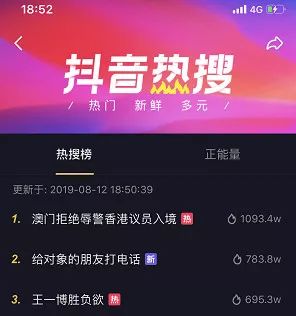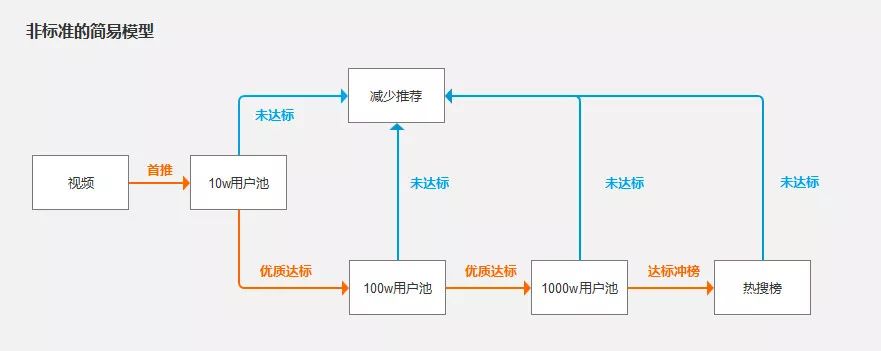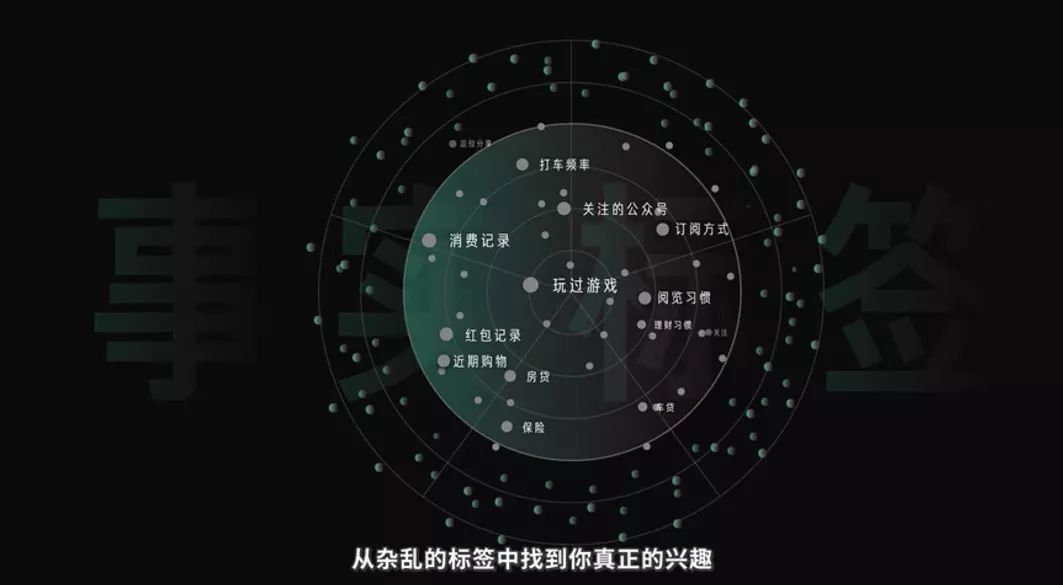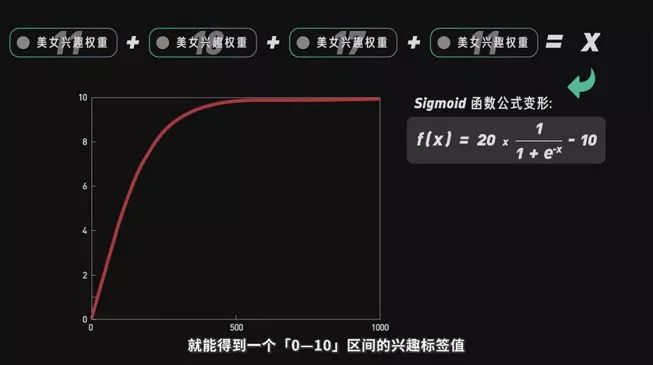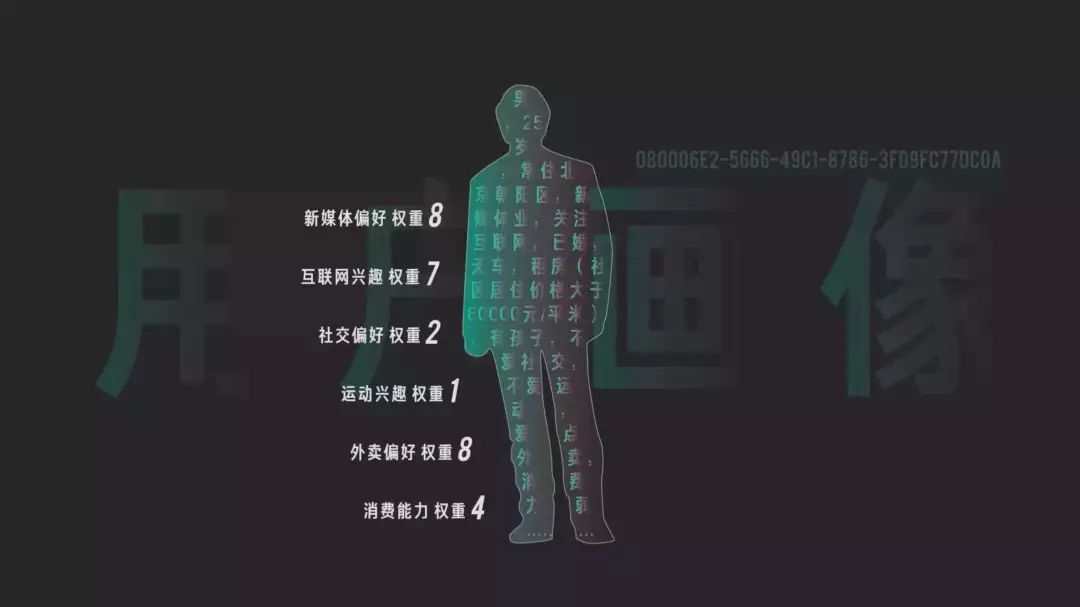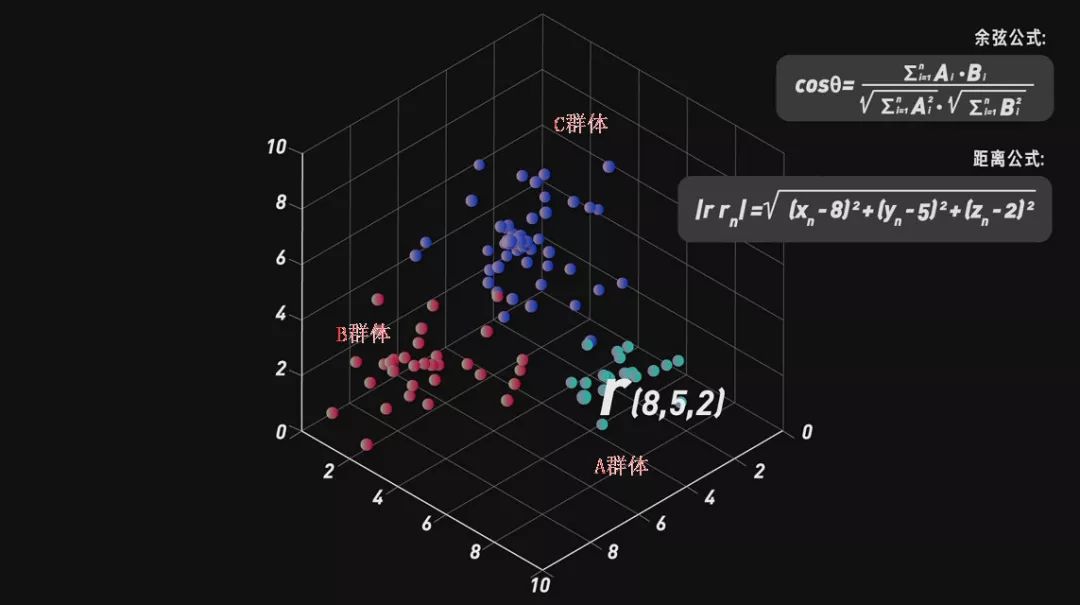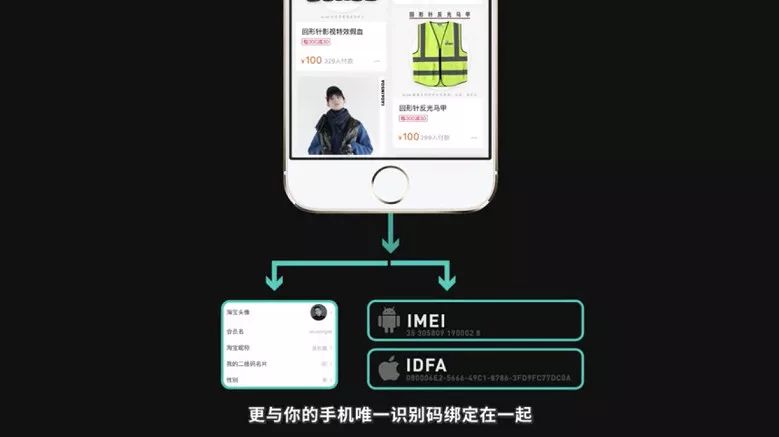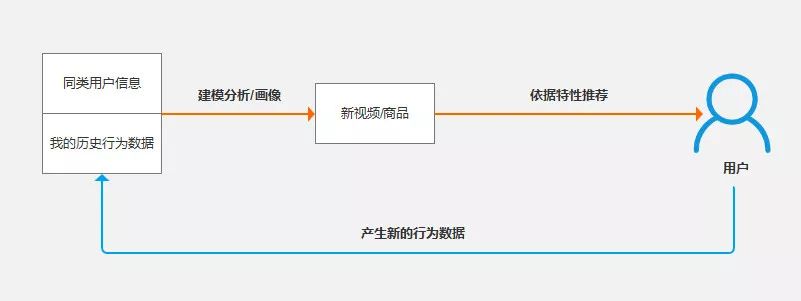Our own actions determine what we can see.
Editor’s note: This article is from WeChat public account “Everyone is a product manager”(ID: woshipm), the author’s cap.
After today’s headlines, many people feel that like “poisoning”, brushing and brushing can’t stop; under the guidance of the algorithm, vibrato becomes a synonym for addiction. I know that it is a recommendation for the recommended algorithm. Why can’t we stop?
-
You just discussed the AJ style with your friends on WeChat, and the public number has been printed on the AJ advertisement. The Taobao homepage also surprises the AJ recommendation;
-
At night, the brushing sound is always brushing, and every video that I feel is brushed has a certain point to poke myself, and you are caught in a cycle of looking for excitement.
Some of these apps know what you are looking for and know your excitement. Are they monitoring your chat history?
No, it’s your personal basic information and behavioral data that tells them that you need these, and they give your needs to you.
How did they do it?
Here’s a brief discussion of personalized recommendations:
First of all, the personality recommendation system is to solve the problem of information overload, improve the efficiency and accuracy of information distribution through personalized recommendation, and make the user more sticky and widely used.
The popular saying is: In order to make you feel better, I will give you what you want.
This is wonderful, but there is a trap here:
You don’t want anything, I will give you less or not to you – you will lose the chance to get in touch with your knowledge domain, single The content is recommended more users will feel tired.
Personalized recommendation in the e-commerce field should be called “precise delivery” – what you want to buy Taobao to recommend to you, this is like a win-win feeling.
But for the content area (short video, etc.), only recommend content that you are interested in, stimulate your excitement, and let the world’s borders become narrower and narrower, immersed in the small world you created; Can we not break after entering the loop of this echo room?
*Echo chamber effect: Some sounds with similar opinions are repeated, and most people in it think that these sounds are all the facts.
We will not be anxious to answer. After we gradually explore the content of personalized recommendation, we can answer the above questions.
I. Independent factor recommendation
Independent factor recommendation is that the recommendation system pushes content or products based on a single factor to the user.
While we understand the recommendation of independent factors, we also understand the two recommended modes: passive recommendation and active recommendation.
1. Passive recommendation
Recommendation is the recommendation result that the user receives the information passively and needs the user to trigger.
For example: users on Taobao filter products according to independent factors of price range. This behavior is completely based on the user’s conscious and autonomous operation, telling Taobao that “I need specific independent factors”, Taobao background will follow your input information. The front end of you feedback.
If the user is not selecting a factor, but at the same time selecting the three independent factors of the price range + delivery area + brand, then the background is filtered and the several areThe product of the factor is recommended to the user – this is only a simple physical label of multiple independent factors, and is also a category recommended by independent factors.
* Of course, the actual recommendation results of Taobao are more complicated, because there are commodity bidding rankings, which will affect the recommended results.
It is similar to the song list square of Netease Cloud Music.
The song list square divides the song list into different categories such as pop, folk, and electronic. Each category is a factor. The user selects which factor’s label, and the background system updates the data of the song list belonging to the factor to the front end. Displayed on the interface, this type is a passive recommendation of independent factors.
2. Actively recommend
Active recommendation, the system regularly updates the data and actively recommend it to the user. The user can open the interface to get the results of the initiative recommendation. For example, the hot song list of Netease Cloud Music, the popularity list of the vibrato is active. Recommended way.
But this kind of hot list has a certain degree of Matthew effect – the content of fire will get more exposure and more and more fire, but most people like the content does not represent each one Users are all loved.
The popular recommendation satisfies the user’s herd mentality and ignores the user’s personality difference experience. It needs to be compensated according to the user’s personality recommendation.
As users become more aware of their own uniqueness, the need for personalized customization is becoming more and more obvious; how to make specific content meet specific users, and let users enter the personalized recommendation happily The trap is the key point we will talk about next.
Second, recommendation for integration factors
The fusion factor recommendation is: Combine several different factors based on a specific algorithm, and then generate a new attribute tag and recommend it to the user’s phone that matches the attribute tag.
We divided the recommendation of fusion factors into three types of recommendation based on attribute recommendation of content itself, collaborative recommendation based on content attribute and user attribute, and collaborative recommendation based on similar users.
1. Recommended based on the properties of the content itself
Recommended objects are generally everyone.
That is to take the short video of vibrato as an example. What we need to do is to create a content portrait based on the content of the content itself, and use the data model to represent the characteristics of the content.
You can see from the chattering hot search list: we put the top 30 videos on the hot search list.
Of course, in addition to the type and quality of the video content itself, the big key is how many people recommend the video to the platform (how many people can brush this video), and the platform judges Whether a video is worth recommending to more user groups is closely related to the historical user’s interaction with the video.
For example:
The short video platform will recommend a new video after review to the 10w person’s basic user pool for playback. If the 10w people have a lot of people to play, like, comment, forward, etc. Operation, the platform judges the video as high-quality content and then recommends it to the user pool of 100w, 1000w, and so on; if the video is in the 10w display volume, most users do not catch the video, rarely play or like, This will reduce the amount of impressions for this video or will not recommend it to more users.
This is a virtuous circle of high-quality content that can be more displayed, while inferior content reduces display.
* Note: User pools are also divided into different types of user pools, for example with non-real data.
In this case, the criteria for determining whether a video can enter the next user pool becomes critical.
In reality, this standard is dynamically changed according to the model. Now let’s do a standard static analysis (so easy to understand):
According to the following basic algorithm formula, you can see that the quality of the video is directly proportional to the user’s preference for this video.
Video Quality = User Affection * Video Quality Base * Subject Category Base + Platform Advertising Base
We first use the “user’s favorite degree” feature to reflect the quality of the video.
Independent factors that affect “user preference” are: user average duration of video, likes, comments, sharing, attention, and uninteresting, each operation is an independent factorIncrease the value.
Each individual factor is different for the platform to judge how much users like the video, such as sharing > comments > likes.
We use weights to represent data weighting for factors with high levels of interest. There are two common ways to weight data;
1. Custom Weighting: Product managers and operations managers define these independent factors and set the weighting factor values based on the usual data reports. This method is relatively straightforward and simple, but he Limited to the team’s own experience, there is still a big deviation from the verification and reality of big data.
2. Data Modeling: Simply put, the time variable, the independent factor, and the weighting factor are calculated by a specific algorithm formula to obtain a quality value of the video; according to this value Recommendations and rankings, as the time variable changes, the independent factor, even the weighting factor, changes according to a certain functional relationship. The input and output of the entire model are dynamically changing, and the model is trained by continuously collecting user behavior data to bring it closer to the actual predicted value.
Based on the above information, we can roughly get a reference table that reflects the user’s preference for the video, which can also reflect the quality of the video:
User Favorites = (play time length + clicks + comments + share – no interest +…) * weight factor * attenuation factor
* Under normal circumstances, it is necessary to perform linear equation regression analysis on each indicator to determine the independence of each indicator, and then perform weight analysis, in which the above table is non-real data.
According to the above ideas, we can evaluate the quality and type of the video; with the content image, now only need to find the user interested in this video content to push the video to him.
The following is what we are talking about based on the collaboration of content attributes and user attributes:
2. Collaboration based on content attributes and user attributes
People who recommend to specific attributes.
We collect a person’s basic information and behavior data to conduct a qualitative analysis of a user, and derive a user’s various characteristics in the Internet and in reality. All the features are integrated and become a representative of the real user. Virtual portrait.
Building user image data uses both static and dynamic data:
1. Static User Image Data: When we register an app, we usually enter the name, age, gender, location, and basic information.
2. Dynamic User Image Data: The user’s behavior in the usual life on the mobile phone, such as the game you played, the public number of interest, the consumption record, whether there is a mortgage loan The red envelope has bought insurance – these behaviors eventually turn into thousands of factual labels, which are used to build models to calculate the user’s behavioral preferences.
(Image courtesy of PaperClip PaperClip)
Use the above-mentioned user’s preference for video as an example:
When the user shook his voice and saw a video tagged as a beauty category, it doesn’t mean that the user likes to watch beautiful women (maybe accidentally), which requires more behavior to judge the The user’s preference for beauty videos.
Based on the preliminary formula mentioned earlier:
Love weights for beautiful women=(play time length + likes + comments + share – no interest +…) * weight factor * attenuation factor
In addition to praise, comment, sharing, and attention to the behavior of an author, there is also a time limit: short-term behavior cannot represent long-term interest, and the weight of a single behavior will decay with time; users open each time The beauty content will generate an interest weight, accumulate all the interest weights of all your beauty classes over a period of time, and then use the s-type function to normalize to get a 0-10 interval interest value. The higher the tag value, the user. The more interested you are in beauty.
At this point, the platform can calculate the user’s degree of love and dislike of a certain type of video, and also classify the video, and can directly recommend the video to the user according to the user’s preference.
In addition to calculating the weight of the user’s interest in the content, the platform can also be modeled and calculated in the direction of consumption power, social preference, etc., and then a user portrait that is taught as complete.
In addition, the effect of directly recommending videos through behavior is often not as good as recommending through similar videos – finding people like you, recommending their browsing history to you is often better than guessing what you like!
3. Based on similar user collaboration recommendations
How do people find the same people as you?
According to the above ideas, we build models in the user’s favorite preferences weights, social preference weights, consumption power weights, etc., calculate user preferences, and then convert the weight values reflected by these preferences into feature vectors!
For example, we have the user’s favorite weight for beauty to 8, the social preference weight is 5, the consumption power weight is 2, the vector is understood as a coordinate on the multidimensional space, and the vector coordinate of each user is substituted into the cosine formula. And the distance formula, you can calculate the person similar to you, and then classify the user.
* The neighborhood technique is used here: the user’s historical preference information is used to calculate the closer the points in the distance space between users.
This way, advertisers or platforms can recommend products or videos based on consumption records and preferences and preferences similar to yours, which happens to be the type you like.
It should be noted that the behavior data collected by WeChat/Taobao not only corresponds to your account number, but also is tied to your mobile phone unique identification code – even if you do not register and do not log in, your behavior data will be the same. It is collected; at the same time, the advertising platform can also advertise for you on other apps based on your mobile phone ID. You can also see Taobao’s AJ ads when you shake the phone!
In general, all your online behavior will leave traces of operations (basic information and behavioral data) on the mobile phone. The platform collects these historical traces, performs data cleaning, structured data, modeling analysis, and calculation. Out your behavioral preferences and recommend products and content to you based on your preferences or preferences.
This is why you just discussed AJ styles with friends on WeChat, brushed the public number and brushed the ads of AJ, Taobao firstThe page also surprises the appearance of AJ recommendation – the brushing sound is always brushing at night, I feel that every video I brushed has a certain point to poke myself.
So what is the strange circle that falls into the echo room?
* Echo Room Circle: Only recommend content that you are interested in, let you touch the world’s boundaries and become narrower and narrower, immersed in the small world you created.
Three, the trap of the echo room circle is our own digging
Your current behavioral data will determine what content you will receive in the future – from this perspective, the results of personalized recommendations are entirely up to your own inclinations.
If you can tolerate those who disagree with you, you can patiently read or comment on interactions. According to the mechanism of personal recommendation, your content stream will have both your favorite content and there will be Beyond self-awareness, don’t worry about personalized recommendations that will leave you in the Echo Room.
Instead, if you only accept opinions or people that you agree with, you can’t tolerate dissidents, and you will black out the content that is not equal to your own views; in the long run, there will be only your favorite content in your information flow. Immerse yourself in the echo room I built.
Personality recommendation is just a recommendation based on your habits. It is still your own that falls into the Echo Room.
Reference Books: Personality Recommendations
Use cases and images from: Paperclip PaperClip


